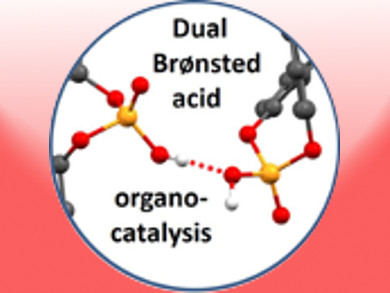Catalytic transformations can be optimized by using bifunctional catalysts, in which the reactivity and selectivity of the catalytically active group is influenced by an interaction with a second functional group.
In a minireview, Raja Mitra and Jochen Niemeyer, University of Duisburg-Essen, Germany, have examined the mode of action of chiral organocatalysts with two Brønsted-acidic groups. These catalysts allow stereoselective catalytic transformations without the need for expensive or toxic metal centers, which makes them environmentally friendly and easy to use.
The design of such bifunctional catalysts requires a fundamental understanding of their mode of action, since the exact role of the assisting Brønsted-acid is variable and the exact pattern of intra- and intermolecular hydrogen bonding has a crucial influence on the reaction outcome. Structural and computational data are analyzed to give valuable insights into the nature of bifunctional Brønsted-acid catalysts, which may aid the development of more effective catalysts for specific asymmetric transformations.
- Dual Brønsted-acid Organocatalysis: Cooperative Asymmetric Catalysis with Combined Phosphoric and Carboxylic Acids,
Raja Mitra, Jochen Niemeyer,
ChemCatChem 2018.
https://doi.org/10.1002/cctc.201701698




